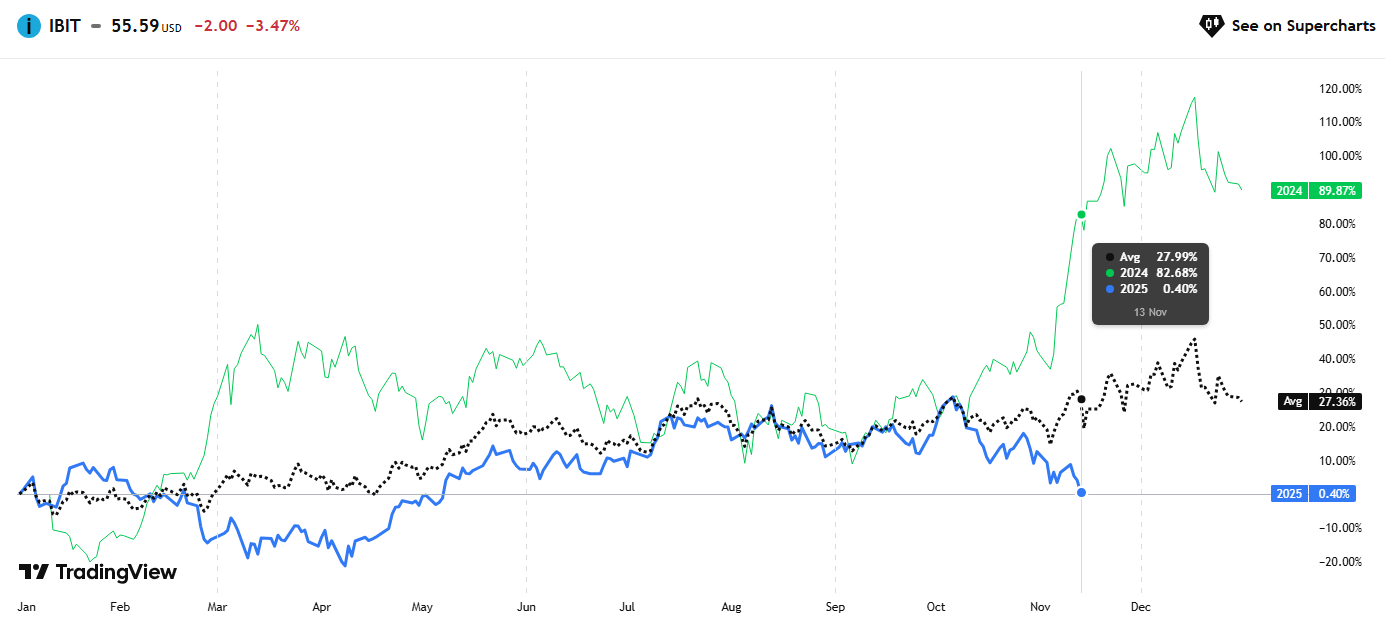Bitcoin Enters Bear Market Correction: Multiple Challenges Amid Institutional Withdrawal and Market Downturn
- November 18, 2025
- Posted by: Ace Markets
- Category: Financial News

Recently, the Bitcoin market has been undergoing a significant downward correction, not only continuing to decline below the psychological threshold of $100,000, but also briefly falling below $97,000 per coin, a new low since May 8th, continuing the downward trend that has led to a market capitalization loss of over $450 billion since the beginning of October. This once-glorious cryptocurrency, after a dismal October, has only achieved a shaky recovery, and is now under renewed pressure after fluctuating repeatedly in a range slightly above $100,000. The core driver of its performance in most of 2025—unwavering institutional confidence—is gradually fading.
Institutional withdrawal and loss of core support, the driving effect of capital flow diminishes.
For much of 2025, institutional investors remained a crucial pillar of Bitcoin’s legitimacy and price. Bloomberg data shows that spot Bitcoin ETFs attracted over $25 billion in inflows, pushing total assets to approximately $169 billion. This stable allocation of funds once reshaped Bitcoin as a portfolio diversification tool and a hedge against inflation, currency devaluation, and political turmoil. However, this support has now weakened significantly. In the past month, numerous large buyers, from ETF allocators to corporate finance departments, have quietly withdrawn, resulting in a net outflow of approximately $2.8 billion from spot Bitcoin ETFs.

Markus Thielen, CEO of 10X Research, points out that Bitcoin has only recorded a gain of around 10% this year, far lagging behind gold and tech stocks, causing some professional investors to lose patience. If the price rally stalls, billions of dollars may be withdrawn before the Federal Reserve meeting in December. Institutional withdrawals are not isolated cases. Strategy, once a benchmark for corporate cryptocurrency investment, has seen its stock price fall to almost the same level as the value of its Bitcoin holdings, meaning investors are no longer willing to pay a premium for its high-conviction leverage model.
Market structure is changing, and downside risks continue to accumulate.
Both on-chain signals and market data indicate that the Bitcoin market is entering a new phase of vulnerability. Long-term holders have begun selling on rallies, and although the market crash on October 10th cleared out most speculative leverage, key support levels are facing a severe test. Thielen warns that if the price breaks below the key technical support level of $93,000, many holders will quickly incur losses, and players with weaker balance sheets may be forced to liquidate their positions. The market structure is also undergoing subtle changes. Citigroup analysis shows that the number of “whale” wallets holding more than 1,000 Bitcoins is gradually decreasing, while the number of retail investors holding less than one Bitcoin is increasing.

Typically, a weekly inflow of $1 billion can boost Bitcoin’s price by about 4%, and the current stagnation in inflows is directly suppressing upward price momentum. Data from the derivatives market further confirms this cautious sentiment. Data from Coinbase’s Deribit exchange shows a surge in demand for protective put options with strike prices below $100,000, with contracts trading most actively around $90,000 and $95,000, reflecting heightened investor concerns about downside risks. Furthermore, crypto-related stocks have also been severely impacted, with Bitcoin-related stocks, exemplified by Strategy Inc., plummeting in recent weeks, almost completely erasing their previously substantial value premium and wiping out billions of dollars in investor capital.
Institutional opinions are divided, with a bear market becoming the mainstream view.
While institutional opinions are somewhat divided on the current market situation, a bear market assessment has become the mainstream. 10x Research explicitly states that Bitcoin and most crypto-related assets are already in a bear market, with their model warning of this shift in mid-October. Current data indicates that market sentiment is deteriorating at its core. The firm emphasizes that Bitcoin has been consistently trading below the long-term moving average that marks a turning point in the crypto cycle, a clear signal of momentum exhaustion. Historically, the bear markets of summer 2024 and early 2025 both resulted in declines of 30% to 40%. Currently, Bitcoin has fallen more than 20% from its 2025 high, and there are no signs of a sustainable rebound. Bitcoin already faces heavy spot selling pressure and corporate hedging pressure. As the appeal of the crypto market’s own narrative diminishes, its correlation with traditional assets strengthens. Recent global market volatility and the fading rebound in US stocks have further exacerbated the cryptocurrency downturn.

Of course, some argue that recent data should not be interpreted as panic selling or a market top. This viewpoint states that wallets holding more than 10,000 Bitcoins only saw a 1.5% decrease in balance in October, hardly qualifying as a “fire sale.” The outflow of funds from ETFs is more of a temporary weakness than a structural risk; whales are actually gradually taking profits amid weak ETF demand, a pattern that has repeatedly occurred in previous cycles.
Despite Bitcoin’s significant gains over the past 18 months, with approximately 5% remaining year-to-date and a 40% increase since the 2024 US election, and persistently strong speculative demand across various markets, the core market contradiction has shifted from being driven by capital inflows to a lack of confidence and tightening liquidity. Funding gaps caused by institutional withdrawals, the risk of breaking key support levels, and increased correlation with traditional financial markets all contribute to the uncertainty surrounding Bitcoin’s future trajectory. A breach of the $93,000 support level could lead to further downward pressure on the market; only when capital inflows and liquidity improve, and market positioning and volatility are reset, will the next upward cycle be possible.
